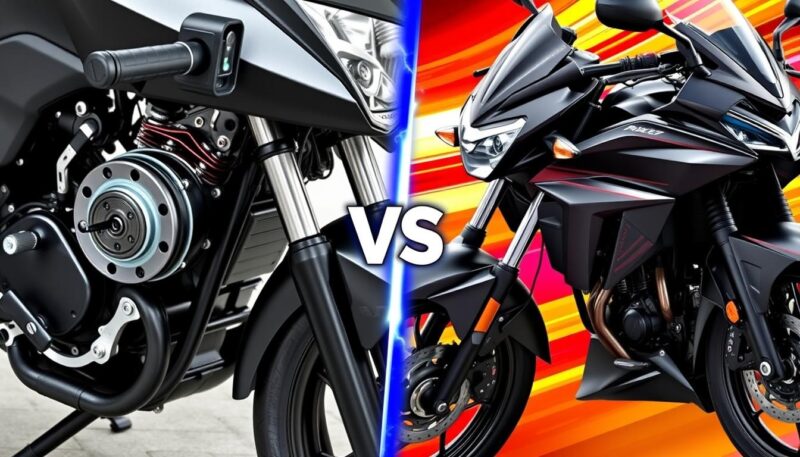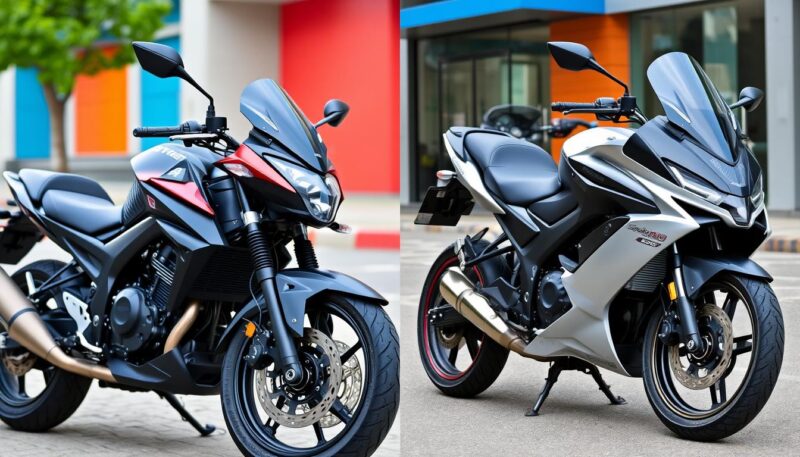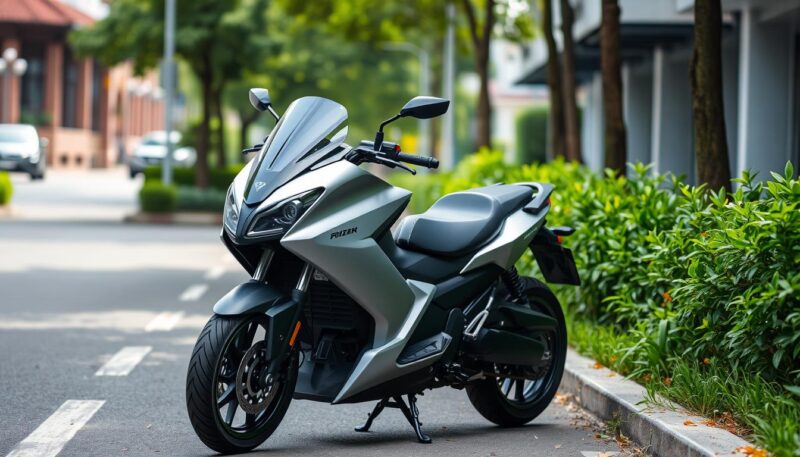The world of motorcycling is rich and diverse, featuring a variety of motorcycle types that cater to different experiences and rider preferences. One of the most significant questions that often arises is whether all motorcycles are manual. While manual motorcycles have traditionally dominated the market, automatic motorcycle options have been gaining traction, sparking an ongoing debate among enthusiasts. This guide to manual and automatic motorcycles aims to provide you with critical information, helping you navigate the pros and cons of each transmission type.
Understanding the differences between manual and automatic motorcycles can make a substantial difference in your riding experience. Each type comes with its own set of benefits and drawbacks, providing varying levels of control, performance, and ease of use. For instance, it’s well-known that manual motorcycles equip riders with better acceleration and fuel efficiency, while automatic models are often praised for their ease of operation, especially for newcomers. As you read through, you’ll find valuable insights and statistics to aid in your decision-making process, whether you lean towards manual motorcycle preferences or are considering the growing appeal of automatic motorcycles.
Understanding Motorcycle Transmissions
Motorcycle transmissions play a crucial role in determining how a motorcycle operates and behaves on the road. Different types of motorcycle transmissions are designed to meet various riding styles and preferences. Understanding what separates manual and automatic motorcycles can help you make an informed decision about which type suits your needs best.
What is a Manual Motorcycle?
A manual motorcycle defined typically features a gearbox that allows riders to control gear changes manually using a clutch lever and a gear selector pedal. Riders engage their preferred gear based on the speed and power they desire, offering a sense of freedom that many enthusiasts appreciate. This setup encourages active participation in the riding experience and may provide faster acceleration due to better control over engine performance.
What is an Automatic Motorcycle?
In contrast, what is an automatic motorcycle? These models utilize advanced technology to shift gears for the rider, reducing the need for manual intervention. Automatic motorcycles, often equipped with a continuously variable transmission (CVT) or Honda’s dual-clutch transmission (DCT), simplify the riding process. While these motorcycles provide ease of use, especially in busy traffic, they typically come with a higher price tag and added weight, affecting their fuel efficiency.
How Gear Systems Work
Motorcycle gear systems explained typically reveal three primary types: fixed gears, freewheeling gears, and slider gears. Most motorcycles boast a transmission with four to six gears that enhance performance and adaptability. The basic motorcycle shifting process involves squeezing the clutch, engaging the gear shift lever, rolling the throttle, and gently releasing the clutch while accelerating. Each click on the gear shift lever represents a distinct gear shift, emphasizing the importance of practice to master a manual transmission.
Are All Motorcycles Manual?
The world of motorcycles is diverse, with various options available to meet the desires of riders. The question, “are all motorcycles manual,” often arises, particularly as new trends surface. This section explores the overview of manual motorcycles while examining the rising popularity of automatic motorcycles, providing insights into the shifts in rider preferences.
Overview of Manual Motorcycles
Manual motorcycles have long been the standard in the industry, offering riders a thrilling experience characterized by greater control and responsiveness. Popular models like the Triumph Bonneville T120 and Yamaha MT-07 exemplify the appeal of manual transmission systems. These bikes require a certain skill level, making them rewarding for those who invest the time to master their operation. The learning curve associated with manual motorcycles can be steep, challenging beginners but ultimately providing a more engaging ride.
Rise in Popularity of Automatic Motorcycles
In recent years, a noticeable shift has occurred in the motorcycle market, showcasing an increase in the popularity of automatic motorcycles. Although they are not as prevalent as their manual counterparts, automatic models have gained traction, especially in urban settings where navigating through heavy traffic is a daily occurrence. Automatic motorcycles such as the Honda NC750X DCT and Aprilia Mana 850 attract new riders looking for ease of use and convenience.

Despite the rise of automatic models, manual motorcycles continue to be favored for their thrilling acceleration and lighter weight, which contribute to better fuel efficiency. Notably, automatic motorcycles tend to have higher upfront costs, increased fuel consumption, and more complex maintenance needs compared to manual options. As manufacturers respond to evolving rider demands by developing additional automatic models, this segment’s growth appears likely to continue, particularly with the rising interest in electric motorcycles.
| Characteristic | Manual Motorcycles | Automatic Motorcycles |
|---|---|---|
| Market Prevalence | Dominant | Increasing |
| Control and Skill | High skill required | Lower skill required |
| Weight | Lighter | Heavier |
| Fuel Efficiency | Better | Less efficient |
| Cost of Purchase | Generally lower | Higher |
| User Preference | Thrilling ride | Convenient for city |
Manual vs Automatic Motorcycles: Key Differences
When comparing manual and automatic motorcycles, several important differences emerge. Each type has its own characteristics that can impact your riding experience. Understanding these distinctions can help you make a more informed decision based on your preferences and needs.
Ease of Use and Learning Curve
The ease of use in motorcycles can vary greatly between the two transmission types. Automatic motorcycles make for an easier entry point for novice riders. You will find that the simplicity of not having to shift gears or operate a clutch allows you to concentrate on balancing and navigating the roads. In contrast, manual motorcycles often require more practice, as mastering clutch control and shifting smoothly demands a certain level of skill and experience.
Acceleration, Performance, and Fuel Efficiency
Motorcycle performance differences often indicate a preference for manual motorcycles among enthusiasts. They usually provide superior acceleration and a more engaging riding experience. Manual bikes enable precise control, allowing you to optimize performance based on road conditions. While automatic motorcycles offer smooth acceleration, they generally cannot match the responsiveness of a manual bike. In terms of fuel efficiency, manual motorcycles tend to excel. Their simpler, lightweight mechanisms lead to lower fuel consumption compared to automatic options, which typically require more fuel due to their heavier design.
Cost Considerations
The cost of manual and automatic motorcycles is another significant factor to consider. Generally, manual bikes are less expensive both in terms of initial purchase and ongoing maintenance. The simpler mechanical structure of manual motorcycles makes them cheaper to fix, appealing to budget-conscious buyers. On the other hand, automatic motorcycles often come with higher maintenance costs and require more expensive replacement parts. This aspect may attract riders who prioritize ease of use and are willing to invest more in their motorcycle experience.

Conclusion
In the quest of choosing between manual and automatic motorcycles, it’s essential to consider your personal preferences and riding style. The motorcycle transmission summary reveals that while manual motorcycles are renowned for their engaging experience and superior fuel efficiency, automatic options have gained traction, particularly among novice riders. This evolution in the industry highlights the varied needs of the modern rider, especially in urban commuting situations.
Although fully automatic motorcycles remain limited, with notable examples like the Harley Davidson Livewire, dual-clutch transmission (DCT) systems are making a significant impact. Models like the Honda Gold Wing Automatic DCT and others showcase how this technology caters to riders who crave both convenience and control. Ultimately, the decision you make must reflect your comfort level, the fun factor in your rides, and your specific needs—whether that’s rapid acceleration or a platform that simplifies your journey.
As you navigate the question, “are all motorcycles manual?”, remember that there’s no singular solution. The rich spectrum of motorcycle options allows you to select a type that aligns perfectly with your goals, whether for spirited weekend rides or daily commuting. Your motorcycle choice should be a reflection of your riding philosophy and desired experience.






